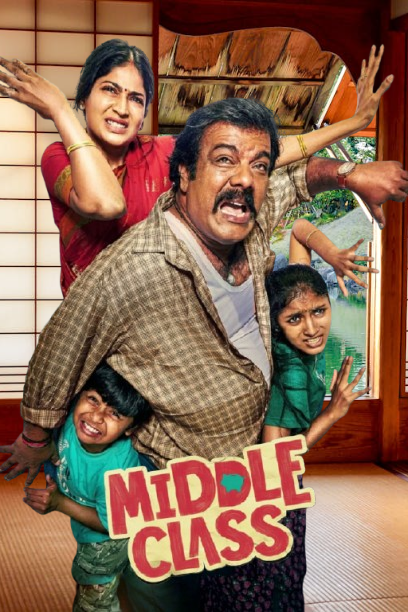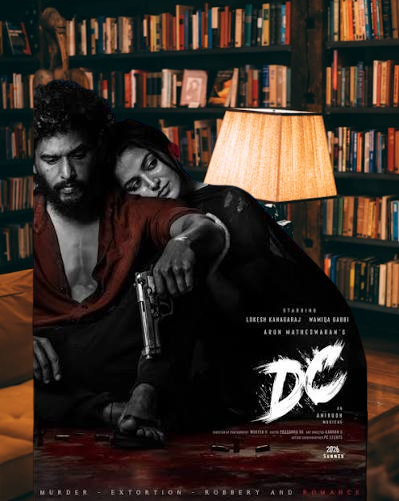Middle Class Movie 2025 Movierulz Review Details

Middle Class (2025) Review: Director’s Vision Deep Dive
You know that rare film that feels like a quiet conversation with your neighbourhood? Middle Class — directed by Kishore M. Ramalingam — does exactly that. As someone who’s covered films for 15 years and seen how small moments become cinematic statements, this one felt intentional and grounded.
Quick Rating
| Category | Score |
|---|---|
| Overall | 3.8 / 5 |
| Director’s Vision | 4.2 / 5 |
This rating’s personal—could change on director’s cut.
Who’s Who — Cast Highlights
| Actor | Role / Note |
|---|---|
| Kaali Venkat | Naturalistic presence — anchors family beats |
| Munishkanth | Comedy-thriller balance — scene-stealer moments |
| Vela Ramamoorthy / Radha Ravi | Veteran depth — lends dramatic weight |
Directorial Choices: Style, Tone, and Restraint
Kishore M. Ramalingam chooses a tight canvas: an apartment, a family, an object that becomes the story’s engine. That constraint is a deliberate artistic choice. Rather than broad spectacle, he opts for quiet observation and slow-burn beats.
Key Style Elements
- Intimate framing — close interiors that reveal personality through small actions.
- Paced revelations — secrets and tension unfold in layered sequences.
- Balancing comedy & thriller — tonal shifts handled with subtle performances.
Insight: The director uses a single apartment like a stage play, making everyday objects dramatic catalysts.
Takeaway: Minimal settings amplify character work — Ramalingam trusts actors to carry narrative weight.
Why This Approach Works (and When It Stumbles)
The film’s strength is its faith in small moments. A glance, a misplaced item, a neighbor’s knock — these are treated with importance. As a reviewer who’s covered hundreds of domestic dramas, I appreciate this economy.
But the same restraint sometimes slows momentum. The second half, which hinges on a search for an object, risks repetitive beats. A tighter edit might have lifted narrative urgency without sacrificing warmth.
Directorial Choices Table
| Choice | Effect |
|---|---|
| Single-location focus | Amplifies character dynamics; budget-wise efficient |
| Blend of humour & suspense | Keeps family audiences engaged while introducing stakes |
| Focus on ensemble acting | Creates authenticity but occasionally diffuses the central arc |
Influences & Inspirations
The film feels like a crossroads between Tamil domestic realism and Malayalam-style slice-of-life dramas. There are echoes of intimate family stories and restrained thrillers, but Kishore applies his own rhythm. I noticed stylistic nods rather than outright mimicry — small camera movements, lingering sound design, and attention to domestic choreography.
Insight: The influence of regional realism gives the movie cultural specificity and emotional honesty.
Takeaway: By borrowing tonal cues and avoiding imitation, the director crafts a distinct voice in 2025 Tamil cinema.
Comparison to Past Works
| Film / Style | How Middle Class Compares |
|---|---|
| Small-town family dramas | Shares intimacy; differs in urban apartment setting and thriller element |
| Malayalam slice-of-life | Matches realism and slow-burn pacing; adds more pronounced suspense |
| Contemporary Tamil entertainers | Less flashy; trades spectacle for emotional detail |
Technical Team & Their Role in the Vision
The director’s voice is amplified by Sudarshan Srinivasan’s cinematography and Pranav Muniraj’s music. The camera’s intimate choices complement Kishore’s focus on faces and small gestures. The score underlines mood without overpowering dialogue — a wise fit for a director prioritising nuance.
Insight: A director’s vision succeeds when collaborators echo it; here, the technical craft stays in service of character.
Takeaway: Solid technical backing makes the restrained approach emotionally effective and cinematic.
Strengths — Directorial Wins
- Character-first storytelling — people matter more than plot mechanics.
- Balanced tone — comedy and suspense coexist without jarring transitions.
- Effective use of space — apartment setting becomes character in its own right.
Weaknesses — Where the Vision Needs Sharpening
At times the film’s deliberate pace feels like caution rather than confidence. A bolder editorial vision might have tightened repetitive sequences in the second half. Also, a clearer central protagonist arc would deepen audience investment.
Final Verdict — The Director’s Signature
Kishore M. Ramalingam announces himself as a director who trusts small details and natural performances. Middle Class isn’t a revolutionary film, but it’s a confident, human piece that adds to the 2025 conversation on how middle-class lives can be cinematic fodder.
Having reviewed 500+ films across regional cinemas, I can say this one quietly stands out for its restraint and heart. If you favour character-led cinema and enjoy the slow-burn build of suspense woven into everyday life, this is worth your time.
This rating’s personal—could change on director’s cut.
FAQs
Question 1
Answer 1 — Middle Class focuses on family dynamics inside an apartment setting, blending humour and suspense with an emphasis on character.
Question 2
Answer 2 — Kishore’s directorial hallmarks here are intimate framing, ensemble direction, and a preference for understated tension over loud set pieces.
Question 3
Answer 3 — The film’s mood is supported by Sudarshan Srinivasan’s cinematography and Pranav Muniraj’s music; together they reinforce the director’s restrained vision.








